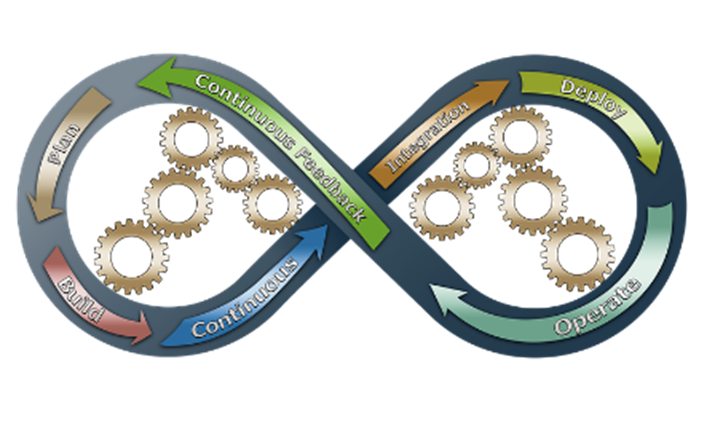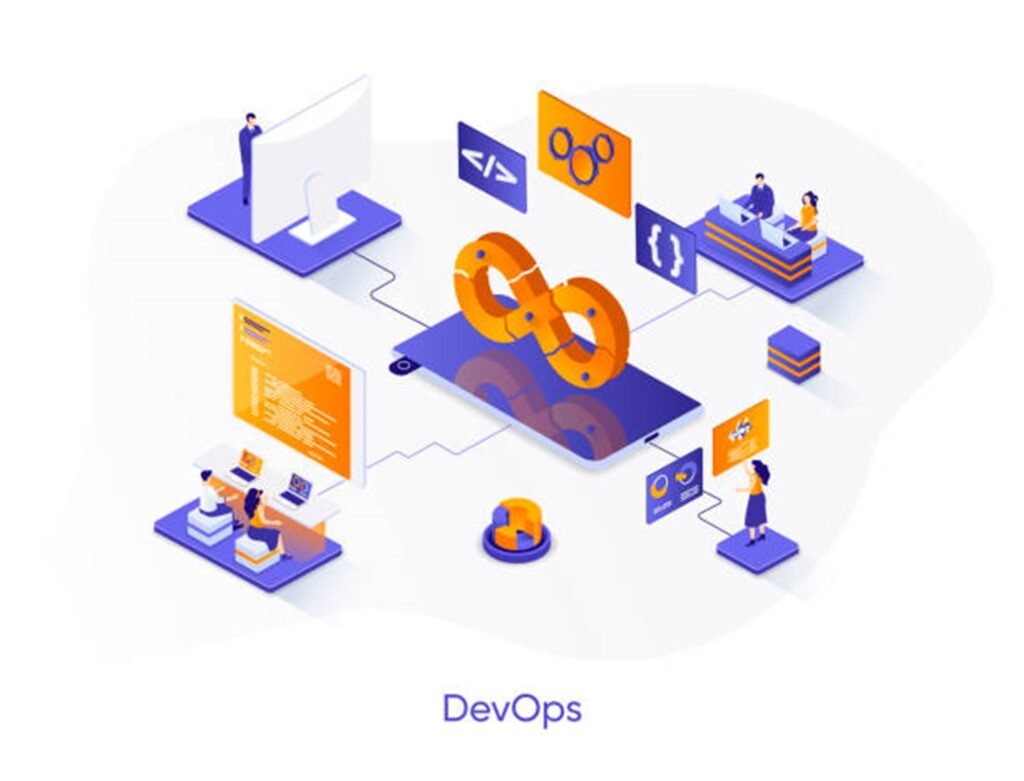By: A. Mishra
Technology today has evolved. The need for a personalized touch from a developer is no longer as prevalent as it once was. In fact, with the use of applications such as Slack, many developers have found that they can build complicated applications without ever having to talk to one another. DevOps, or Development Operations, is a form of IT set up specifically for the development process.
What is DevOps?
DevOps is a software engineering practice that focuses on the collaboration between developers and IT operations personnel. It is an extension of lean thinking, with a goal of unifying software delivery processes. This means that teams work together to build, test, and deploy applications with high quality and speed while maintaining security and stability[1].

The History of DevOps
DevOps has been around for a while. It started in the early 2000s when programmers and sysadmins met and realized they needed to work together and share responsibility for software and systems. One of the main goals of DevOps is to create a unified culture between teams so each can work together harmoniously. It is a software development term for the collaboration between developers and IT professionals in order to create faster, more reliable software. The history of DevOps began in 2008, when Patrick Debois coined the term at Agile 2008 Conference in Montreal[2].
The Trends That Led to the Rise of DevOps
While the exact start date of DevOps is unknown, many people say that it started in 2009 when Patrick Debois wrote a blog post about automating deployments. According to his blog, he found that “the solutions for scalability and agility are hiding in plain sight.” The idea of DevOps has since grown because people have found that it solves the problem of having siloed teams and unconnected IT systems[3].
How to Implement DevOps at Your Organization
The first step in implementing a successful DevOps strategy is to establish a culture of collaboration. This will require a significant change in mindset on behalf of your team, from being siloed and defensive to being open and collaborative. The next step is to develop a unified understanding of the desired customer experience. Developing this understanding will help your team work towards moving all parts of your organization closer to an agile product delivery model[4].

How to Measure Progress in Your Organization’s Transition to DevOps
Three of the most important things to measure in your organization’s transition to DevOps are how quickly you’re reducing lead time, whether you’re increasing the number of production deployments and whether you’re deploying at a faster rate. These metrics can be found and measured by using tools like New Relic for end-user performance, which monitors request response times and error rates, or Opbeat for monitoring your deployment frequency[5].

Gaining Commitment for Change
It’s important to understand that any change in culture is going to be met with resistance. When it comes to adopting DevOps, we need to find a way to get stakeholders on board with the changes and show them the benefits. This will take time and patience, but also careful planning around how we communicate these concepts. A major obstacle to getting started with DevOps is convincing the organization that it’s worth the investment. There are many reasons organizations are hesitant, but one of the most common is a lack of clarity on how DevOps improves business outcomes. The key to establishing commitment for change is to help leaders see how DevOps will empower IT teams, quickly introduce new tools and technologies, and provide better service delivery to their customers.
Conclusion
In this guide, we’ve covered the basics of DevOps and how it can help your company succeed in a competitive marketplace. Now that you have an understanding of what DevOps is and how it works, the next step is to implement it in your own company! DevOps is a complementary approach for businesses looking to innovate at the fastest rate possible while reducing the risk of errors. The concept of DevOps is about combining development and operations expertise together in order to accelerate time-to-market, while improving the overall quality of your products.
References
- Nisha, T. N., & Khandebharad, A. (2022). Migration From DevOps to DevSecOps: A Complete Migration Framework, Challenges, and Evaluation. International Journal of Cloud Applications and Computing (IJCAC), 12(1), 1-15.
- Kumbhojkar, N. R., & Menon, A. B. (2022). Integrated Predictive Experience Management Framework (IPEMF) for Improving Customer Experience: In the Era of Digital Transformation. International Journal of Cloud Applications and Computing (IJCAC), 12(1), 1-13.
- Ahuja, S. P., Czarnecki, E., & Willison, S. (2020). Multi-Factor Performance Comparison of Amazon Web Services Elastic Compute Cluster and Google Cloud Platform Compute Engine. International Journal of Cloud Applications and Computing (IJCAC), 10(3), 1-16.
- Khan, A., & Colace, F. Knowledge Graph: Applications with ML and AI and Open-Source Database Links in 2022.
- Gupta, B. B. (2017). Requirements Based Web Application Security Testing–A Preemptive Approach.
Frequently Asked Queations
A DevOps Engineer is the person or group who has to figure out how to deploy software in a way that keeps it running and healthy, while making sure that the users get access to their app at all times. They are responsible for ensuring that the code (and tests) are always green, and they have to make sure that user access can be granted at all times.
Agile and DevOps are two well known software development methodologies. Both aim to deliver high-quality products with minimal lead times. They both employ similar principles, but there are some important differences between the two. For example, Agile is designed to be adaptive and responsive to changes in the marketplace, whereas DevOps is designed for a stable environment so that companies can focus on continuous product development without worrying about infrastructure upgrades or management.